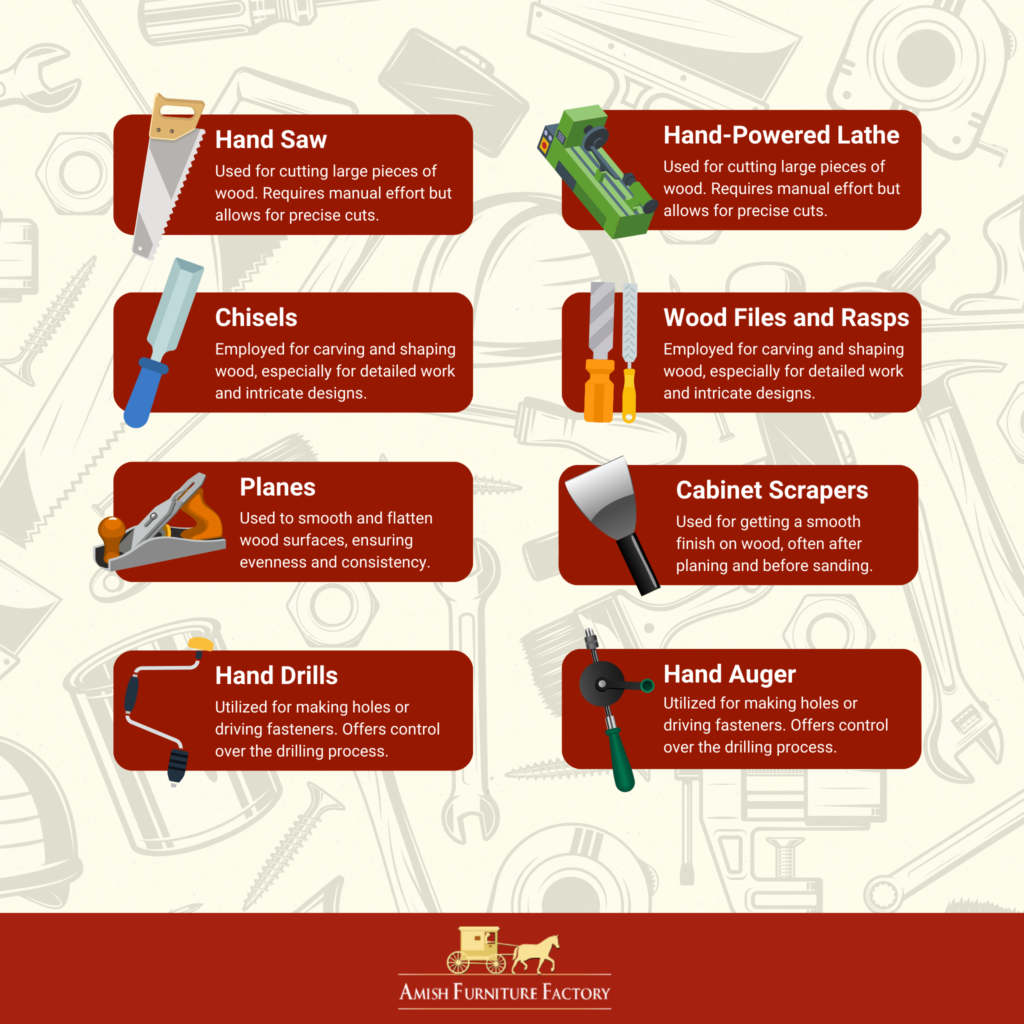
The Amish community’s furniture-making is a unique exception in a world dominated by electricity. They skillfully use time-honored techniques to craft exquisite furniture without modern electric tools, embodying a remarkable fusion of tradition and craftsmanship.
The Amish artisans craft furniture without electricity using hand tools and age-old techniques. Their detailed process involves careful wood selection, traditional joinery, and custom finishing, creating durable and distinctive pieces that last for generations.
To get a deeper understanding of the unique world of Amish furniture-making and understand the intricate processes behind these electricity-free creations, continue reading as we explore each step of their traditional crafting methods.
The Amish Way of Furniture Making
The Amish way of furniture making is a comprehensive process that goes beyond mere construction. It embodies their culture, traditions, and meticulous craftsmanship, resulting in functional furniture and a piece of art.
Embracing Tradition Early
Amish furniture makers start honing their woodworking skills from a young age. In their community, knowledge of crafting furniture is passed down through generations, making it an integral part of their cultural heritage.
This early exposure instills a sense of pride and integrity in their work, ensuring that each furniture piece is made with the utmost care and attention to detail.
Handcrafted Techniques
Every step in the Amish furniture-making process is done by hand. From sanding to staining and sealing, these artisans meticulously work on each piece, often rejecting wood that is too flawed.
Their commitment to perfection and use of low-toxicity varnish speaks volumes about their dedication to quality and sustainability.
The Art of Detail Work
While they may use some non-electric tools for heavier tasks, all intricate detailing in Amish furniture is done manually. Using chisels and other hand tools, these craftsmen create unique designs that often become a signature of their family’s craftsmanship.
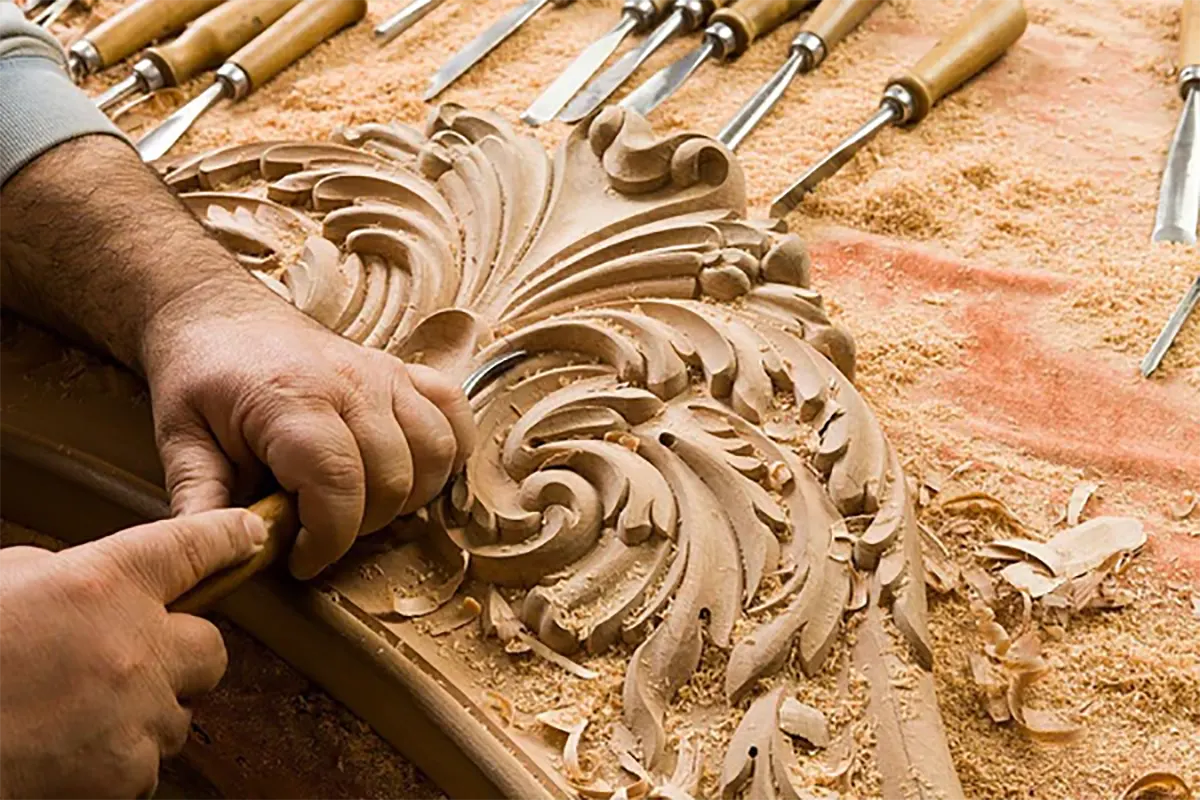
This personal touch ensures that each piece of furniture is functional and a work of art.
Selection of Wood
Amish carpenters are highly selective about their materials. They meticulously inspect each piece of wood for flaws and consider how each piece will contribute to the final product.
Even the wood’s grain is taken into account, reflecting their deep respect for the natural materials they use
Customization
In the Amish tradition, furniture making is often more than just a business; it’s a service to the community. The Amish furniture makers are typically open to customizing each piece according to the client’s preferences, from the choice of wood to the style and finish.
This flexibility allows for a highly personalized touch in every creation.
Amish Furniture-Making Techniques
The artistry behind Amish furniture-making lies in a rich blend of traditional methods and meticulous handcrafting. Through these techniques, they preserve their traditional crafts and produce durable, beautiful, and deeply personal pieces.
Non-Electric Tool Use
One of the most distinctive aspects of Amish furniture-making is their use of non-electric tools. Amish artisans use hand-powered alternatives for tasks that might typically require electric power in a conventional workshop.
Here are some of the non-electric tools Amish furniture makers use:
Detailing and Finishing
Intricate detail work is a hallmark of Amish craftsmanship. These skilled artisans use chisels, planes, and other hand tools to create detailed patterns and textures.
This attention also extends to the finishing process, where each piece of furniture is sanded, stained, and sealed by hand, often through multiple stages to achieve a perfect finish.
Joinery Techniques

Amish furniture is renowned for its durability, attributed to traditional joinery techniques. Instead of relying on nails or screws, Amish carpenters use methods like dovetail joints, mortise-and-tenon, and tongue-and-groove to fit pieces together. These methods enhance the furniture’s strength, longevity, and aesthetic appeal.
Wood Selection and Treatment
Selecting suitable wood is crucial in Amish furniture-making. Artisans carefully choose each piece for its grain, color, and strength.
The wood is then seasoned through natural air drying or kiln processes to reduce moisture content. This careful preparation ensures the wood’s durability and beauty for years.
Custom Hand Carving
Custom hand carving is another technique often employed in Amish furniture-making. Artisans skillfully carve wood into intricate designs, allowing for high customization.
This skill is especially evident in cabinets and headboards, where detailed carvings add a unique, artistic element.
Materials and Quality Standards
Amish furniture stands out through these materials and practices for its durability, functionality, timeless beauty, and cost. The meticulous selection and treatment of materials and unparalleled craftsmanship make each piece a lasting treasure.
Wood Quality

The heart of Amish furniture is undoubtedly the wood used. Amish artisans predominantly choose hardwoods known for their strength and beauty, such as oak, cherry, hickory, and maple.
Each type of wood is selected based on factors like grain pattern, hardness, and natural color. The artisans’ deep knowledge of wood properties ensures that each furniture piece is visually appealing and built to last.
Let’s compare the traditional wood types they commonly use to further understand the impact of wood choice in Amish furniture making. This comparison will highlight the distinct characteristics of each wood type, including their pros and cons, which influence the aesthetics, durability, and functionality of the finished furniture pieces.

Seasoning and Treating Wood
Once the wood is selected, it undergoes a crucial seasoning process. Amish furniture makers traditionally prefer air-drying the wood, which can take several months to a year, depending on the wood type.
This natural process allows the wood to dry slowly, reducing the likelihood of warping or splitting. In some cases, kiln drying is also used to expedite the process, but always with a careful eye on maintaining the wood’s integrity.
Quality of Craftsmanship
The Amish’s commitment to quality is evident in every aspect of their work. From the initial cutting to the final assembly, every procedure is carried out with precision and attention to detail.
The use of traditional joinery techniques not only adds to the strength of the furniture but also enhances its beauty, eliminating the need for nails and screws that can mar the wood’s natural appearance.
Finishing Touches
The finishing process in Amish furniture-making is as detailed as the construction itself. Artisans hand-apply stains and varnishes, carefully selecting each to complement the wood’s natural hue and grain.
This meticulous process produces an excellent wood finish that reveals its inherent beauty, ensuring the furniture ages gracefully over time.
Customization and Styles
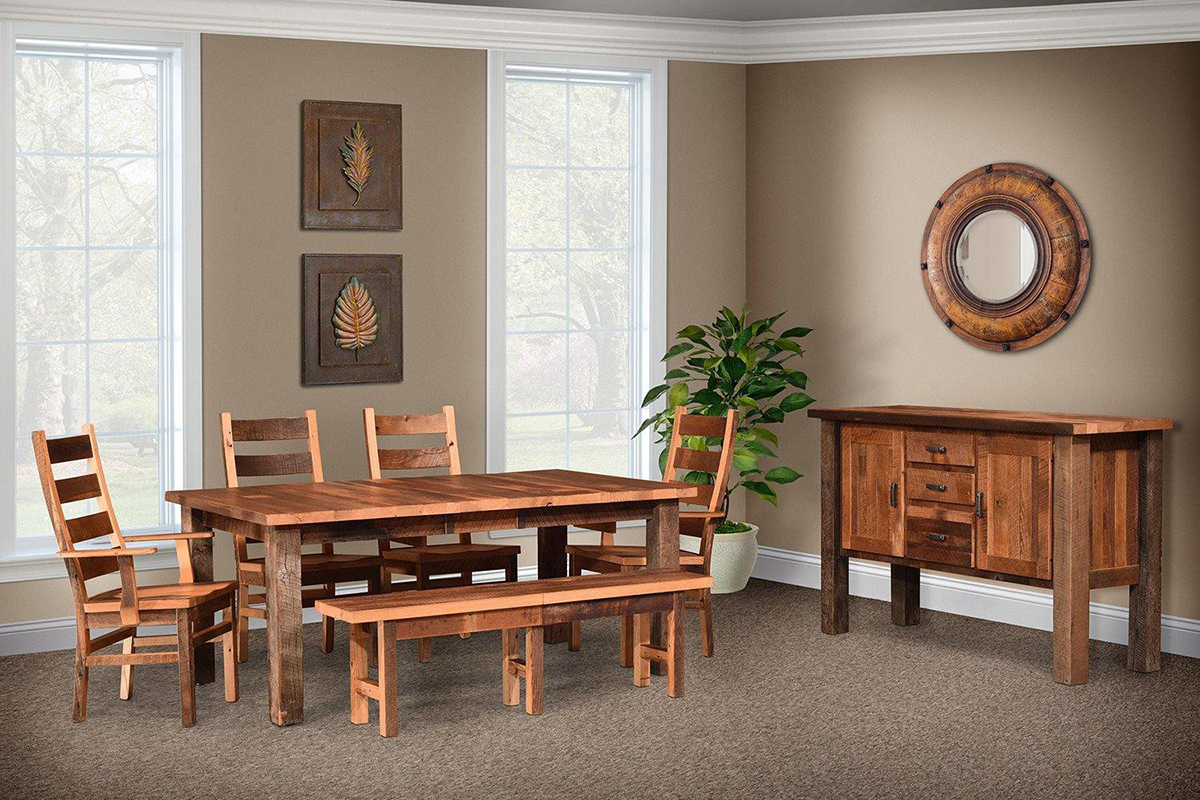
The customization and variety of styles in Amish furniture-making are as impressive as their craftsmanship. From meeting specific design requests to offering a range of styles, Amish artisans ensure that each piece of furniture they create is tailored to their client’s preferences and needs.
Personalized to Perfection
Customization is a crucial aspect of Amish furniture making. Clients can specify everything from the type of wood to the finish, size, and design elements.
This level of personalization ensures that each piece of furniture is not just a product but a reflection of the owner’s taste and lifestyle. Artisans work closely with clients, often accommodating unique requests to ensure the final piece aligns perfectly with their vision.
Traditional and Contemporary Styles
While Amish furniture is rooted in traditional design, artisans have evolved their styles to include contemporary elements. Classic styles like Mission and Shaker remain popular for their clean lines and timeless appeal.

However, Amish artisans are also skilled in creating pieces that fit modern aesthetics, blending traditional craftsmanship with contemporary design principles. This versatility shows their ability to adapt to changing trends while staying true to their heritage.
Durability Meets Design
In every style, whether traditional or modern, the focus remains on durability and functionality. Amish furniture is designed to be aesthetically pleasing but also practical and long-lasting.
Every drawer, hinge, and joint is constructed with the future in mind, ensuring that the furniture withstands the test of time in style and structure.
The Amish Influence on Home Decor
The influence of Amish furniture extends beyond individual pieces to shaping the overall decor of a space. Their furniture can become the centerpiece of a room, bringing a sense of warmth and timelessness.
Homeowners often find that even a single piece of Amish-crafted furniture can elevate the entire ambiance of their home.
The Use of Power Tools
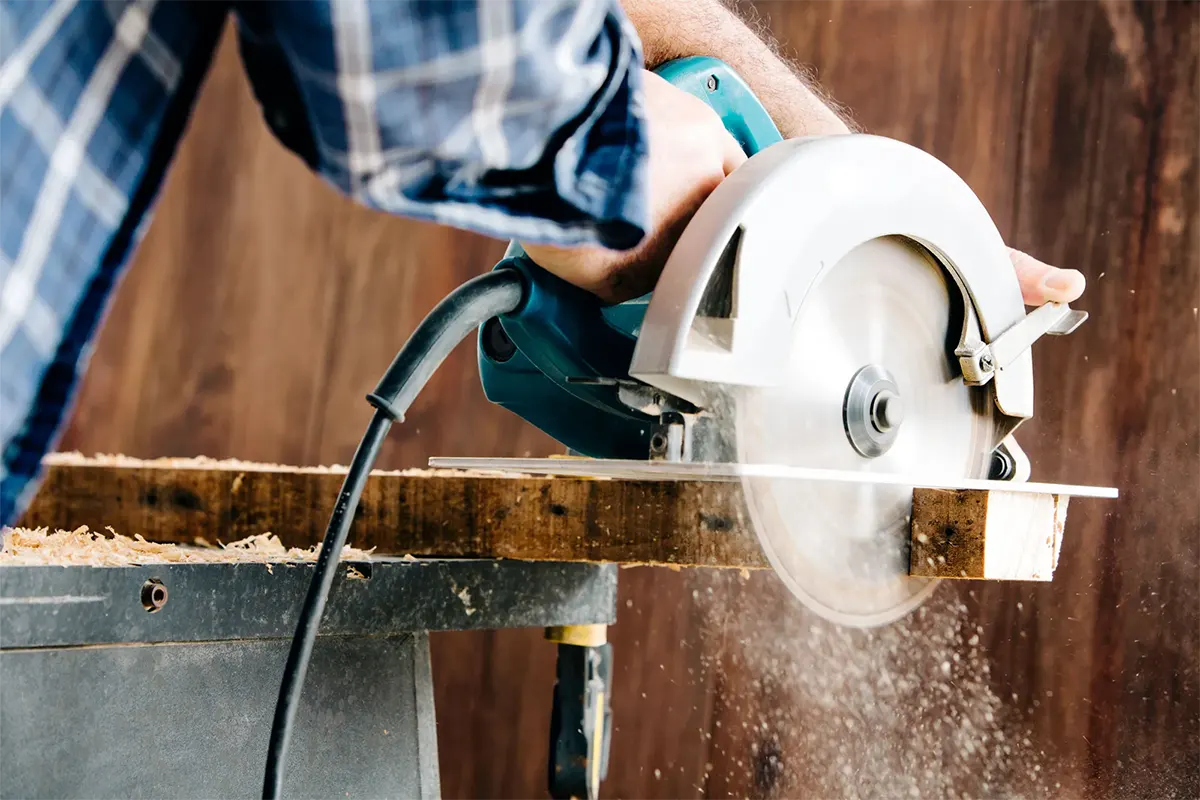
Using power tools in Amish furniture-making is a nuanced aspect of their craft. It exemplifies how they balance adherence to tradition with practical adaptations to modern demands, ensuring that their furniture-making methods remain efficient and faithful to their cultural heritage.
Selective Use of Technology
The Amish selectively use technology, including power tools, to ensure it aligns with their community values and lifestyle. They utilize power tools operated by alternative energy sources such as pneumatic or hydraulic power, propane, or batteries.
Balancing Tradition with Efficiency
In using power tools, Amish artisans balance traditional handcrafting methods and the efficiency of modern technology. For example, a table saw powered by a diesel generator might be used for initial cuts on large pieces of wood, while detailed carving and finishing are done by hand.
Adapting to Modern Demands
The use of power tools also reflects the Amish community’s adaptation to the changing demands of the furniture market. By integrating these tools in a way that doesn’t compromise their values or the quality of their work, Amish artisans can meet larger orders and broader client needs more effectively.
Sustainability and Ethical Practices
Sustainability and ethical practices are fundamental to the Amish way of furniture making. From the materials they use to their production methods and business ethics, every aspect of their craft is guided by a deep respect for nature and the community.
Ethical Sourcing of Materials
The Amish place great importance on ethically sourcing their materials, mainly wood. They often use locally sourced hardwoods, reducing transportation emissions and supporting local ecosystems.
This practice ensures a lower environmental footprint and guarantees the quality and sustainability of the wood used in their furniture.
Longevity and Waste Reduction
A key aspect of Amish sustainability is the creation of long-lasting furniture. This approach inherently reduces waste, as their furniture is meant to be replaced infrequently.
The durability of Amish pieces means fewer resources are consumed over time for replacements or repairs, aligning with sustainable living principles.
Eco-Friendly Finishing Processes
In finishing their furniture, Amish artisans typically use eco-friendly varnishes and stains. These products are chosen to minimize harmful emissions and environmental impact.
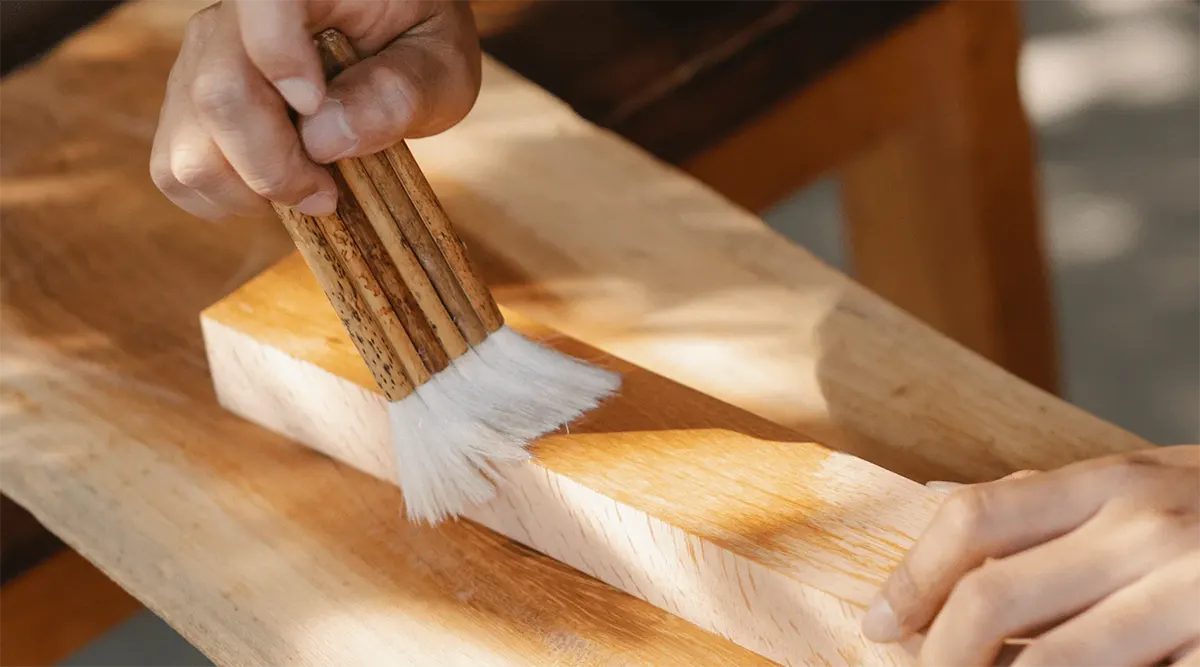
This practice benefits the environment and ensures the artisans’ and end-users safety and health.
Community-Centric Business Practices
The Amish furniture industry is community-centric, focusing on fair and ethical business practices. This includes reasonable labor practices within their communities and honest dealings with customers.
By maintaining these standards, they foster a business environment that is not only sustainable but also socially responsible.
You might also be interested in exploring Amish bathroom practices.
Crafting Elegance Without Electricity: The Amish Way
The journey through the Amish furniture-making method, devoid of electricity, brings to light a remarkable blend of skill, tradition, and innovation.
This approach, deeply anchored in a philosophy of simplicity and sustainability, showcases an extraordinary ability to create exquisite furniture using methods honed over generations.
We discover a world where the strengths of human ingenuity and a deep understanding of natural materials overcome the limitations of technology.
This narrative is not just about the furniture that adorns homes but also about a lifestyle that challenges the norms of our electricity-reliant world, offering a compelling example of sustainable living and craftsmanship.

